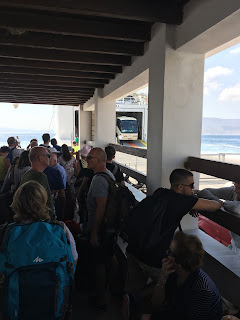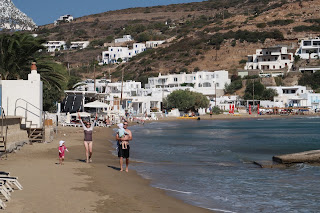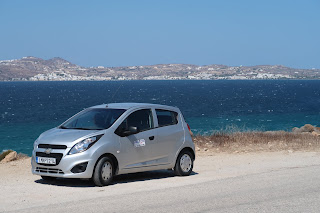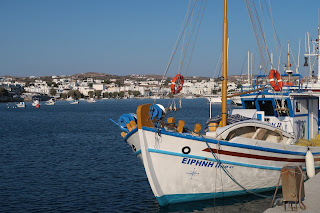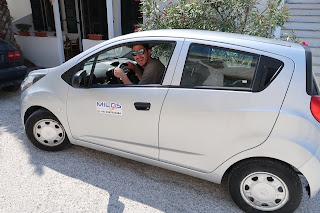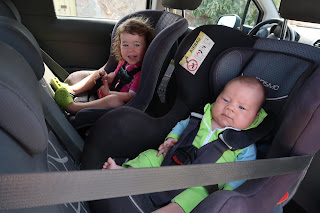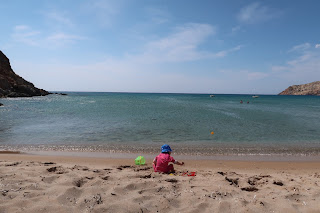This place, man. Where do I begin? Sifnos is a sleepy island just the right distance away from the traditional tourist circuit. There are only a few small hotels on the island, but it's not hard to find a room. And there are only a few restaurants here, but they are all incredible (even by Greece’s high standards). Even better, we generally have the places to ourselves, aside from the owner and his/her kids eating in the corner.
Let me tell you, it’s a uniquely wonderful experience to bring three children to an exotic top-tier restaurant, and see that they’re not the only ones there. I’m probably a bit more self-conscious than I need to be when taking my kids to a restaurant, but seeing the owner's own kids playing with toy cars underneath a table in the corner is uniquely relaxing. I know they'll understand if my two year old doesn't make it through ninety minutes and seven courses.
As any parent knows, you get about 10 seconds to grab a #humblebrag picture of your toddler eating a plate full of vegetables before she devolves into an overactive mashup of high drama and standup comedy.
Social media:
Reality:
And Mimi wasn't the only one struggling. Conrad's confused circadian rhythms generally knocked him out a few minutes after the first course.
If you look closely at Nona's lap, this still qualifies as a family photo. Parenting superwin.
The entire island was just as relaxed as the restaurants that we were eating in. Sifnos is a sleepy, undiscovered gem that makes even Milos feel busy by comparison. But part of the charming sleepiness was because of the time of year we went there. September is the shoulder season on the Greek islands. Most tourists are back at work or school, and the few remaining ones (the upshot of having kids under five) get the islands to themselves.
In addition to the empty restaurants, the beaches were wide open. Maybe one in twenty lounge chairs had somebody in it, and these are some of the prettiest beaches on the planet. It was like living in a Corona commercial. Except with kids. So nothing like a Corona commercial. But beautiful, nonetheless.
Even the city maps were charming. They were hand painted on wood boards every few blocks.
And speaking of charming, this is what a delivery truck looks like on an island of two thousand people.
Today’s run: three apples, seven paper clips, and a single shoelace for the butcher's left boot.
But charming and undiscovered does have a few drawbacks. The most obvious (at least to a doctor and a nurse traveling with their small children) was the dearth of medical services. When we arrived, I noticed a poster announcing that the island was raising money to buy a medical transport helicopter. The closest hospital is on Milos, so people with medical emergencies need to wait for a helicopter to arrive from there before they can be transported.
I did see a sign for a small medical clinic, but the building didn’t look occupied. Fortunately, we didn’t need to find out. Towards the end of our time on Sifnos, Mimi got a bit of a GI bug and briefly developed a low-grade fever. But thankfully she didn’t need much medical intervention beyond a few extra hugs and some underwear changes.
The lifeguard situation was similar. There are no actual emergency personnel on any of the beaches, just a few lifeboats dotting the coastline. I presume that villagers would use the boats to rescue any swimmers or boaters in trouble. But we never had the opportunity to see them in use, and that was fine by us.
Well, that's not entirely true. One afternoon, we saw somebody using a lifeboat to pull a giant plastic swan from one end of the beach to another. Apparently, lack of floating scenery qualifies as an emergency out here.
But who am I to judge? Maybe the secret to longevity isn't having a robust emergency services program, it's spending the afternoon towing a giant floating bird. And I'm mostly serious when I say that. This has been the way of life on Sifnos for hundreds of years, and the residents seem to be getting along just fine.
Speaking of the island’s history, Sifnos has long been a major pottery supplier to the region. The clay soil on the island is apparently excellent for dishes and bakeware. In fact, the pottery industry is still quite active, and there’s a ceramic workshop right next to our hotel.
You know my daughter, and you know where this is going.
Ever-moving Mimi gave me the opportunity to support the local pottery industry by knocking one of the bowls off of its drying rack. It was still soft, but not so soft that it didn’t shatter into a dozen pieces when it hit the ground.
This being Greece, the potter was extremely understanding when he saw that a child was involved. He wouldn’t let me give him money for the bowl, and my Greek isn't good enough to explain to him that he’d actually be doing me a favor if he took my money. Broken bowl, five euros, end of transaction. But instead, we had a broken bowl, followed by “No, please! She’s a child!” followed by guilt, shame, and the related emotions of parenthood. So, unnamed friend who recently got married, I hope you enjoy your new ceramic kitchenware. Mimi says, "You're welcome."
And this will be a surprise to no one, but five days goes by really quickly when you’re on an island paradise with good friends.
By the end of our time on Sifnos, Conrad and Mimi were back on a reasonable sleep schedule. So Nona, Grael, Aimee, and I finally got that drink on the back porch we had been dreaming about.
We’re really lucky.








